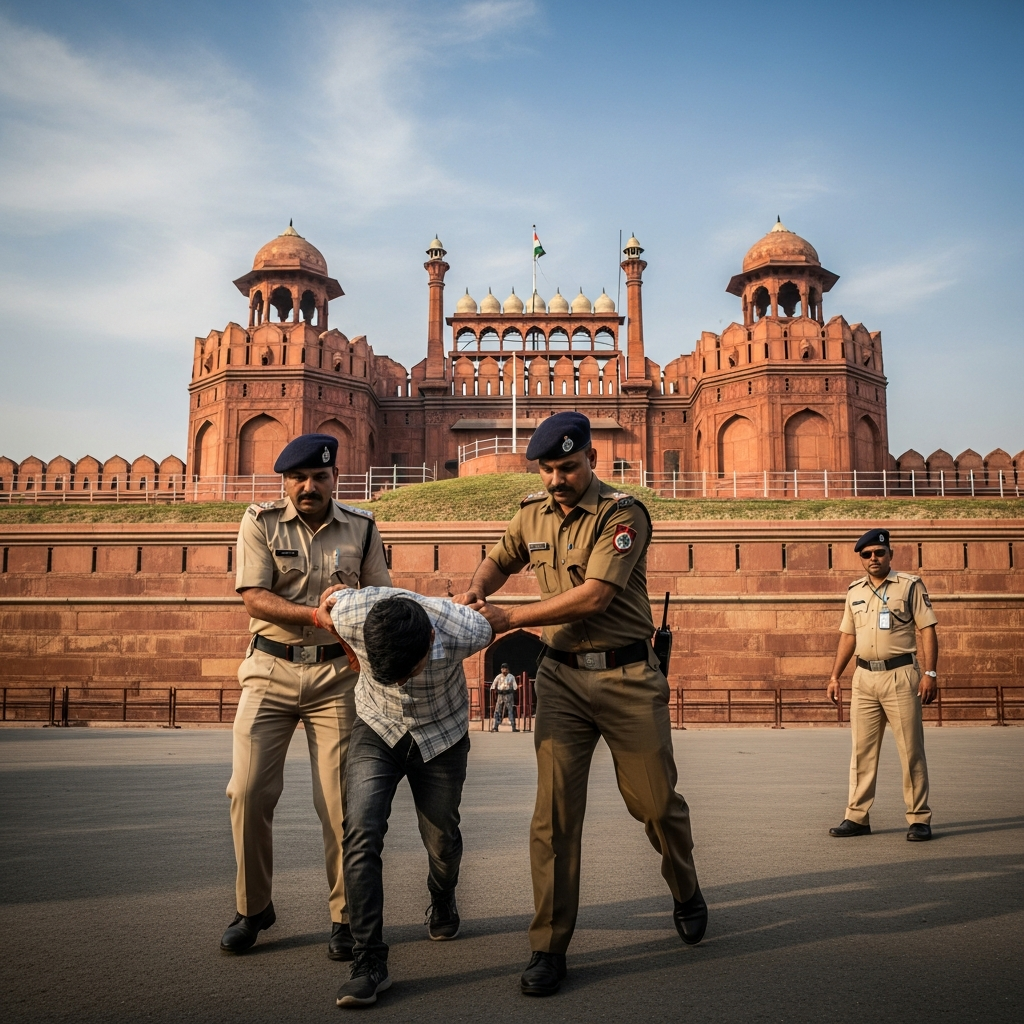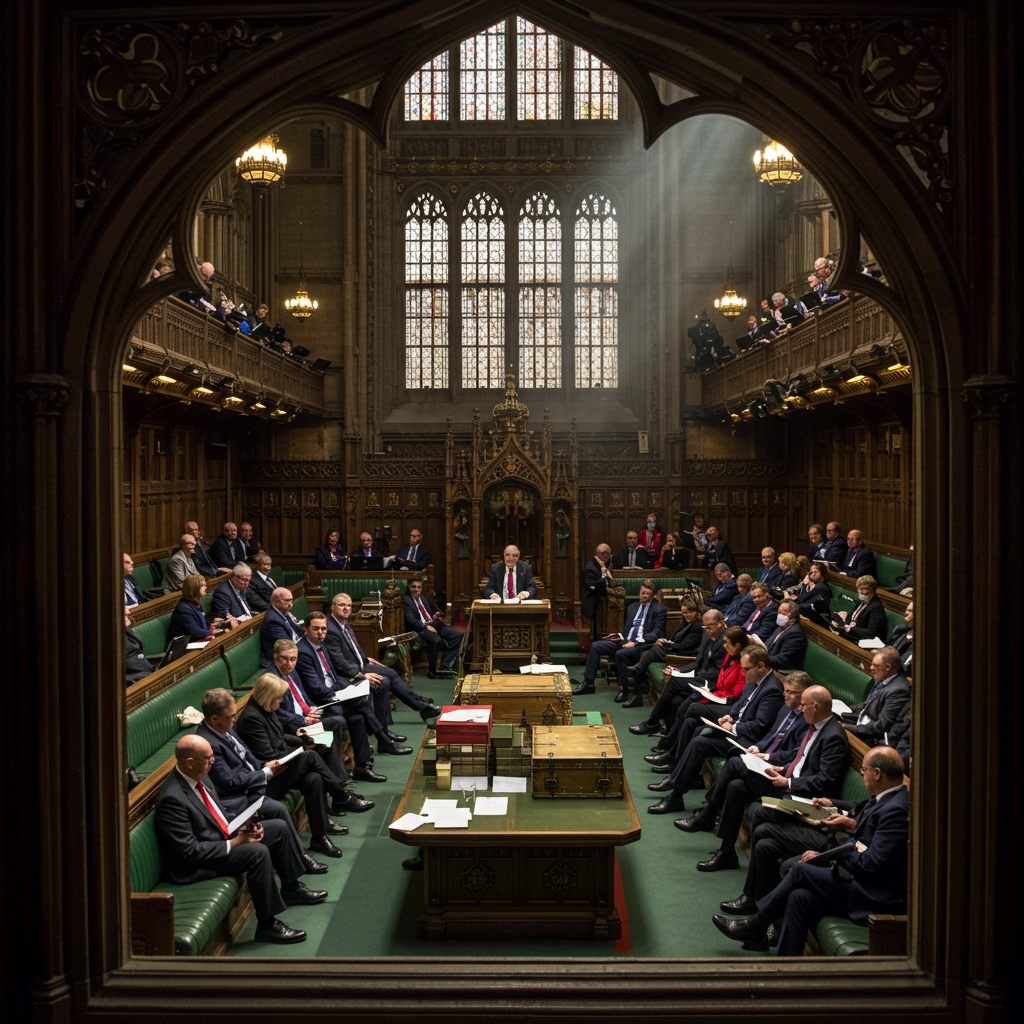India’s national security forces have made a significant arrest in connection with the deadly car bombing near Delhi’s iconic Red Fort, an incident that shook the capital and claimed the lives of at least 12 people while injuring over 30. The National Investigation Agency (NIA) confirmed the apprehension of a Kashmir resident, identified as a key conspirator in what the government has officially labeled a “terrorist incident” and a “conspiracy” aimed at destabilizing the nation. This breakthrough marks a crucial step in unraveling a complex web of terror, as investigators uncover alleged links to organized terror outfits, a sophisticated funding trail, and plans for broader coordinated attacks.
The Devastating Blast Near an Indian Landmark
The heart of Delhi was plunged into chaos on November 10 when a car exploded near the historic Red Fort, also known as Lal Qila. This 17th-century Mughal fortress stands as a powerful symbol of India’s independence and is a bustling tourist hub, drawing thousands daily to its crowded bazaars and vibrant street vendors. The attack, a rare occurrence for the sprawling metropolis of over 30 million, left a scene of devastation in its wake.
A Scene of Chaos and Devastation
Around 6:42 p.m. local time, a slow-moving white Hyundai i20 came to a stop at a busy traffic signal adjacent to a metro station before detonating. Delhi Police Commissioner Satish Golcha reported that the vehicle’s occupants and those nearby bore the brunt of the explosion. Thick, orange flames billowed into the night sky, engulfing at least six vehicles and three autorickshaws. Footage from the aftermath showed twisted, charred vehicles and victims strewn across the street, a horrifying sight that eyewitnesses described as “blood everywhere.” Emergency services responded swiftly, extinguishing the blaze and transporting survivors to nearby hospitals. The incident, the first car bomb attack in Delhi since 2011, underscored its severe and unusual nature.
Unraveling the Conspiracy: The NIA’s Swift Response
The National Investigation Agency, India’s premier counter-terrorism law enforcement body, swiftly took charge of the probe. Within days, their extensive efforts began yielding results, leading to the arrest of a pivotal suspect. The investigation has involved questioning over 70 witnesses, including some injured in the blast, and meticulously tracing every lead.
Arrest of a Kashmiri Resident
On Sunday, November 16, the NIA announced the arrest of Amir Rashid Ali, a resident of Pampore in Indian-administered Kashmir. Authorities apprehended Ali in Delhi following an intensive search operation. He stands accused of actively conspiring with the alleged suicide bomber. Crucially, investigators revealed that the car used in the devastating explosion was registered in Ali’s name. Authorities believe Ali traveled to Delhi specifically to facilitate the purchase of this vehicle, which was subsequently modified to carry explosives for the attack.
The Alleged Suicide Bomber: Dr. Umar Un Nabi
Investigators have also identified the alleged suicide bomber as Dr. Umar Un Nabi, a resident of Pulwama district in Indian-administered Jammu and Kashmir. Tragically, Nabi died instantly when the vehicle he was driving exploded at the traffic light. Further inquiries revealed that Dr. Nabi worked as an assistant professor in the General Medicine Department at Al Falah University in Faridabad, within the National Capital Region. As part of their evidence collection, the NIA has seized another vehicle believed to belong to Nabi for detailed forensic examination. This marks the first official confirmation explicitly naming Umar as a “suicide bomber” and the incident as a “vehicle-borne Improvised Explosive Device (IED).”
The Deeper Web: Funding, Coordinated Plots, and Explosives
The investigation into the Red Fort bombing has expanded far beyond the immediate incident, revealing a much larger and more intricate terror plot. Agencies have uncovered what they term a “white-collar terror module” with alleged ties to prominent terror outfits, including Jaish-e-Mohammed and Ansar Ghazwat-ul-Hind.
Tracing the Terror Funding Trail
A significant breakthrough came with the tracing of a Rs 20 lakh funding trail, allegedly routed through a hawala network by a Jaish-e-Mohammed handler. This money is suspected to have flowed through three doctors: Umar Un Nabi, Muzammil, and Shaheen. Around Rs 3 lakh of these funds were reportedly used to acquire 26 quintals of NPK fertilizer, a chemical compound known for its potential to produce explosives. Reports suggest tensions between Umar and Shaheen over the handling of these funds, with a crucial lead from Muzammil aiding investigators in mapping this complex financial network.
Planned Coordinated Attacks
Preliminary investigations suggest a chilling broader conspiracy: a plan for coordinated explosions at four distinct locations. Approximately eight suspects were allegedly preparing to execute these simultaneous attacks, operating in pairs, each carrying multiple IEDs. Diaries recovered from Umar and Muzammil contained references to dates between November 8-12, indicating the planning window, and listed around 25 names primarily from Jammu and Kashmir and Faridabad. Delhi Police had previously arrested Dr. Adeel Ahmad Rather, Dr. Muzamil Shakeel, and Dr. Shaheen Saeed for alleged links to past terror cases, further connecting them to this developing investigation.
The Volatile Nature of the IED
Investigators believe the IED likely incorporated triacetone triperoxide (TATP), notoriously known as the “mother of satan,” a highly volatile explosive. This was possibly mixed with 2-3 kilograms of ammonium nitrate and fuel oil, bringing the total explosive weight to an estimated 40-50 kilograms. CCTV footage reportedly showed a large bag on the car’s rear seat, indicating the size of the device. Given TATP’s extreme sensitivity to heat, friction, and shock, an accidental detonation theory is also being considered, suggesting the bomb might have exploded due to an unintended trigger rather than deliberate action by Umar. The ease of sourcing TATP’s precursor chemicals from common household items presents a significant challenge for security agencies.
Al Falah University Under Scrutiny
Al Falah University, where Dr. Umar Un Nabi was an assistant professor and other accused doctors had connections, has naturally come under intense scrutiny. While the university’s management has officially distanced itself from the accused individuals, stating their connection was limited to their official capacities as employees and denying any knowledge of their alleged activities, legal actions have been initiated.
University’s Official Stance and Legal Actions
The Delhi Crime Branch has filed two FIRs against the university, alleging cheating and forgery, and has issued a notice requesting relevant documents. The Association of Indian Universities (AIU) also temporarily suspended Al Falah University’s recognition. Consequently, around 50 individuals, including both students and staff from the university, have been detained for questioning as investigators delve into the full extent of any potential complicity or oversight.
Ongoing Investigations and National Security Implications
The investigation continues to broaden, with agencies meticulously retracing Umar Nabi’s movements from Faridabad to Nuh to Delhi using call records, tower data, and over 50 CCTV cameras to identify accomplices. The recovery of three 9mm cartridges near the blast site, a caliber “not permitted for civilian use,” has added a new dimension to the probe, even though no weapon was found.
Broader Security Measures and Related Incidents
In the wake of the Red Fort blast, central Delhi authorities have intensified anti-terror measures. These include extensive verification drives, stricter picket checks, the deployment of armed personnel at sensitive locations, and the seizure of numerous unattended vehicles. The incident has drawn a firm response from the Indian government, with Prime Minister Narendra Modi vowing to bring “the perpetrators, their collaborators, and their sponsors” to justice. Opposition leaders like Rahul Gandhi also expressed deep sorrow, describing the news as “extremely heartbreaking.”
The National Medical Commission (NMC) has taken decisive action, canceling the registrations of four doctors from Jammu and Kashmir—Dr. Muzaffar Ahmad, Dr. Adeel Ahmad Rather, Dr. Muzamil Shakeel, and Dr. Shaheen Saeed—due to their alleged terror links. Separately, an accidental explosion occurred at the Nowgam Police Station in J&K, killing nine personnel, while a forensics team was handling seized materials related to the Red Fort blast. J&K LG Manoj Sinha commended the police for dismantling a pan-India “white-collar” terror network and confirmed the Nowgam blast was accidental. Furthermore, Assam Police arrested 21 individuals for online posts supporting the Delhi terror attacks, signaling a zero-tolerance stance on such content. The NIA is coordinating closely with multiple state police forces to unravel the full extent of this wide-ranging conspiracy.
Frequently Asked Questions
What exactly happened during the Delhi Red Fort bombing?
On November 10, a white Hyundai i20 car, allegedly carrying a potent IED, exploded near a traffic light adjacent to Delhi’s historic Red Fort. The blast, occurring around 6:42 p.m. local time, resulted in at least 12 fatalities and over 30 injuries. It caused widespread devastation, charring multiple vehicles and creating a scene of chaos. This incident, officially declared a “terrorist act” by the Indian government, was the first car bomb attack in the heavily guarded capital since 2011, highlighting its severe impact on national security and public consciousness.
How are authorities tracing the broader terror conspiracy related to the Delhi bombing?
Indian authorities, primarily the National Investigation Agency (NIA), are tracing a broad “white-collar terror module.” Key steps include the arrest of Amir Rashid Ali, in whose name the blast vehicle was registered, and identifying Dr. Umar Un Nabi as the alleged suicide bomber. Investigations have revealed a Rs 20 lakh hawala funding trail, suspected links to Jaish-e-Mohammed and Ansar Ghazwat-ul-Hind, and the seizure of 2,900 kilograms of explosives. Agencies are also probing plans for coordinated attacks across four locations and have made multiple arrests, including other doctors, to dismantle the network.
Why is the Red Fort a significant target, and what was the government’s response?
The Red Fort holds immense national and symbolic importance as a 17th-century Mughal fortress and the traditional site for India’s Prime Minister’s Independence Day speeches. Its status as a major tourist attraction also ensures high visibility. Targeting such a landmark aims to inflict maximum casualties, create widespread fear, and challenge the state’s authority. In response, Prime Minister Narendra Modi swiftly condemned the incident as a “conspiracy,” vowing to bring “perpetrators, collaborators, and sponsors” to justice. The government has also heightened anti-terror measures across Delhi and initiated legal actions against institutions allegedly linked to the suspects.
The investigation into the Delhi Red Fort bombing continues to unfold, revealing a far-reaching and deeply concerning terror plot. With key arrests made and intricate financial and operational networks being dismantled, Indian security agencies remain committed to bringing all involved to justice. This incident underscores the persistent challenges in combating terrorism and the vigilant efforts required to safeguard national security and public safety.



